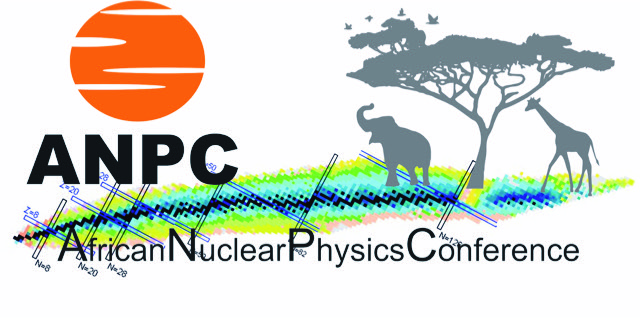Speaker
Description
A small number of naturally occurring neutron deficient nuclides with proton number Z>33, referred to as p-nuclei, cannot be produced by neutron-capture processes [1]. Instead, these stable nuclides are thought to be produced by the photodisintegration (p-process) of slow-neutron capture (s-process) and rapid-neutron capture (r-process) seed nuclei [1]. However, for $^{180}$Ta, the p-process is not sufficient to explain the observed solar abundances and additional processes are invoked. The $^{180}$Ta production mechanism causes controversy since calculations show that several nucleosynthesis processes, sometimes exclusively, can reproduce the observed $^{180}$Ta abundance [2], making it a particularly interesting case to study. Since the astrophysical sites for the nucleosynthesis of $^{180}$Ta remain unknown, a combination of several nucleosynthesis processes is undeniably possible. However, the significance of individual processes cannot be clearly determined, as a result of the uncertainties on the reaction rates for $^{180}$Ta due to the unavailability of experimental data, e.g. the radiative neutron capture rates of $^{179,180}$Ta isotopes or other nuclear ingredients needed to constrain these rates, such as the nuclear level density (NLD) and γ-ray strength function (γSF) [3].
In the present experiment, these parameters were measured using the $^{181}$Ta($^{3}$He,$^{3}$He’γ) and $^{181}$Ta($^{3}$He,$^{4}$Heγ) reactions with 34 MeV beams, $^{181}$Ta(d,d'γ) and $^{181}$Ta(d,tγ) reactions with 15 MeV beams, and $^{181}$Ta(d,d'γ) and $^{181}$Ta(d,pγ) reactions with 12.5 MeV beams at the Oslo Cyclotron Laboratory (OCL). Using the SiRi array and the CACTUS array (26 NaI(Tl) detectors) to measure particle-γ coincidence, the NLD and γSF were simultaneously extracted below the neutron separation energy, through iterative procedures using the Oslo method [4]. From all six reactions involving $^{180,181,182}$Ta, the neutron capture cross sections of astrophysical interest are calculated using the nuclear reaction code TALYS and compared to previous results. From this, the reaction rates are calculated and used in stellar evolution calculations to investigate the role of the s-process in the nucleosynthesis of $^{180,181}$Ta and the role of p-process nucleosynthesis for $^{180}$Ta in Type-II supernova. In this talk I will present the latest results on our work to constrain $^{180}$Ta nucleosynthesis from the new experimental data.
[1] T. Rauscher et al., Rep. Progr. Phys. 76 (2013) 066201.
[2] A. Heger et al., Phys. Lett. B 606 (2005) 258.
[3] S. Goriely et al, Astron. & Astrophys. 375 (2001) L35–L38.
[4] A. Schiller et al., Nucl. Instrum. Methods Phys. Res. A 447, 498 (2000).
This work is based on the research supported in part by the National Research Foundation of South Africa Grant Number 92600 and the IAEA under research grant number 20454.

